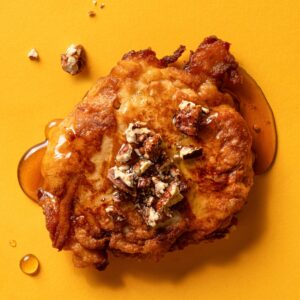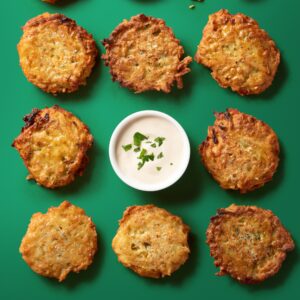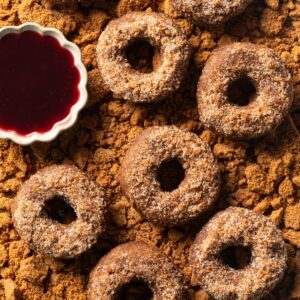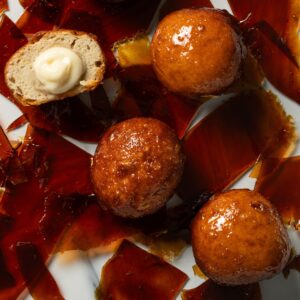I Just Realized If I Don’t Make Dinner, No One’s Making Dinner
| May 21, 2024
Now available on Kosher.com
Rechama:
Somebody, anybody, HELP! I’m newly married, and for some reason, you don’t get a how-to-cook guide along with a kallah bracelet. I need some lessons!
Rivky:
Hi, Rechama! We got you, girl. Welcome to NewlyFed! I’m going to teach you the cooking basics that recipes seem to take for granted that you know. We’ll get you comfortable in your own kitchen in no time.
Rechama:
Phew! It’s embarrassing to call your mother and ask her how to boil an egg; I found that out the hard way!
Rivky:
Eggs are a great place to start! They’re easy to get right and a valuable asset to your kitchen toolbox, whether you’re eating them straight-up, using them in baking, or adding them to a quiche or kugel. So, let’s get cooking!
We Cracked It
Eggs can be your protein of choice for days; there are so many way to prepare them! Here are some of Rivky Kleiman’s favorites:
Soft-boiled Eggs
Soft-boiled eggs are good on their own as a quick breakfast, and delicious in a bowl of ramen, over some leftover rice, or on avocado toast. The trick is in the timing and the quick transfer of the eggs to ice water as soon as they’re done cooking.
Boil water in a pot set over medium-high heat. Gently place the eggs into boiling water, cover the pot, and set a six-minute timer. After six minutes, use a spoon to lift each egg out of the pot and immediately move them to ice water. Cool for 5–10 minutes, then peel and enjoy.
Mastered soft-boiled eggs? Try this!

Hard-boiled Eggs
A staple for Shabbos lunch, hard-boiled eggs get a bad rap for their supposed sulfurous smell and grey-tinged yolk. Both of these signs are indications that you’re cooking your eggs for way too long!
Fill a pot with cold water, then add the eggs. Cook for 15 minutes over high heat. Once done, move the eggs into a bowl of cold water or run cold water over them.
Cool Fact: To tell the difference between a hard-boiled egg and a raw one, do the spin test. Spin both eggs. The one that moves faster is the hard-boiled egg. (Soft-boiled eggs also spin fast.)
Mastered hard-boiled eggs? Try This!
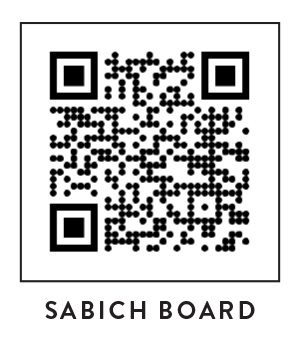
Scrambled Eggs
Scrambled eggs are a staple and a must to master. They’re a great anytime meal, though they’re most commonly eaten at breakfast. Make them plain or add a small splash of milk or water (approximately one teaspoon) to lighten them up a little. To set yourself up for success, prepare to stand at the stove for the entire time they’re cooking (about 2–3 minutes).
Crack a couple of eggs into a bowl. Scramble them by mixing them really well in an up-and-down circular motion to ensure that no white clumps remain. Add salt and pepper. Preheat a nonstick pan over medium heat. Once it’s hot, spray with cooking spray or add a pat of butter and swirl to coat the pan. Using a wood or silicone spatula, slowly and gently mix the eggs so egg curds form, scraping and folding the eggs from the edge of the pan into the middle. Once all the liquid has set to your liking, move to a plate and enjoy.
Mastered scrambled eggs? Try this!

Omelets
American omelets are similar to scrambled eggs, but they have smaller curds and fill the entire pan. They generally also have a filling. It might take a couple of tries until you’ve mastered a neat fold-over, but practice makes perfect!
Crack two or three eggs into a bowl and scramble them. Preheat a nonstick pan over medium heat and spray with cooking spray. Pour in the eggs, give them a quick mix immediately, and then let them set, pulling up the edges gently and tilting the pan to allow the loose egg mixture from the middle to get to the edges of the pan and cook. When the eggs are almost set, add toppings such as cheese, mushrooms, tomatoes, herbs, or onions to one half of the pan, taking care not to overfill the omelet. Once the eggs are set, fold the non-filled side of the omelet over the toppings. Slide to a plate and serve.
Mastered omelets? Try this!

Quiches
Quiches are a classic brunch food, but they’re a great breakfast, lunch, or dinner option too. You can get creative with your fillings and experiment with mix-ins and seasonings to find what you prefer most.
First, preheat your oven to 350°F (175°C).
Then, preheat a frying pan over medium heat. Add 2–3 tablespoons oil. Add sliced mushrooms first to release their liquid. Then add diced onions. Season generously with salt and pepper.
Meanwhile, mix 2 eggs with 8 oz (225 g) heavy cream or whipping cream in a bowl. Add shredded muenster cheese. Add garlic salt or other seasonings, if desired.
Pour mushroom/onion mixture into a frozen pie crust, followed by cream/egg mixture. Bake for 45 minutes on the middle rack. To avoid spillage and to help it cook as evenly as possible, place the quiche onto a metal baking sheet.
Mastered quiches? Try these!

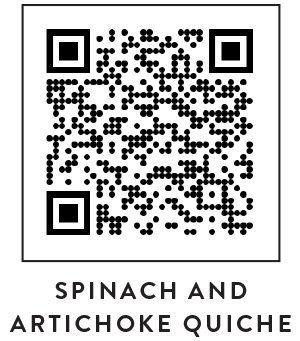
Watch all new episodes of NewlyFed only on Kosher.com

(Originally featured in Family Table, Issue 894)
Oops! We could not locate your form.

